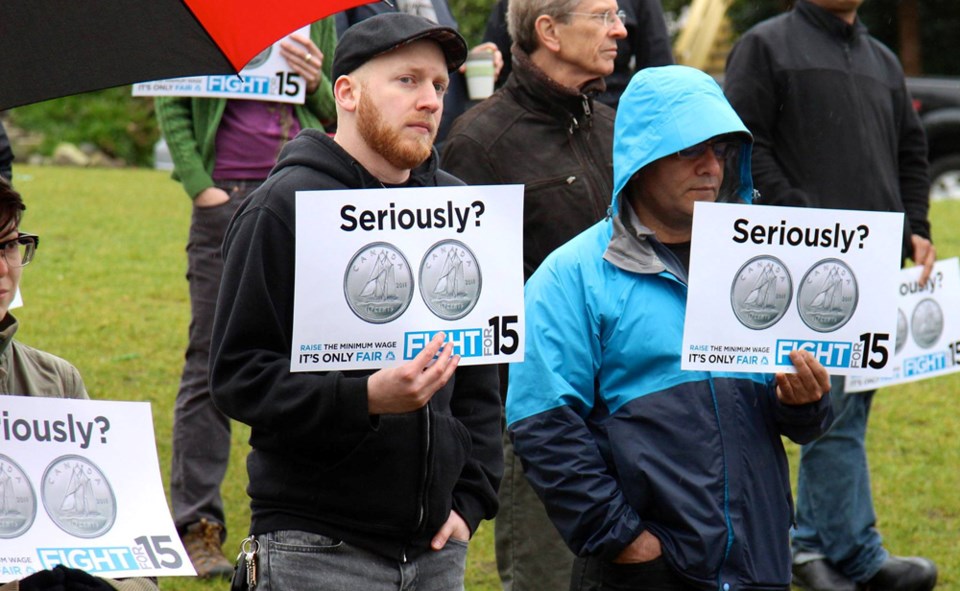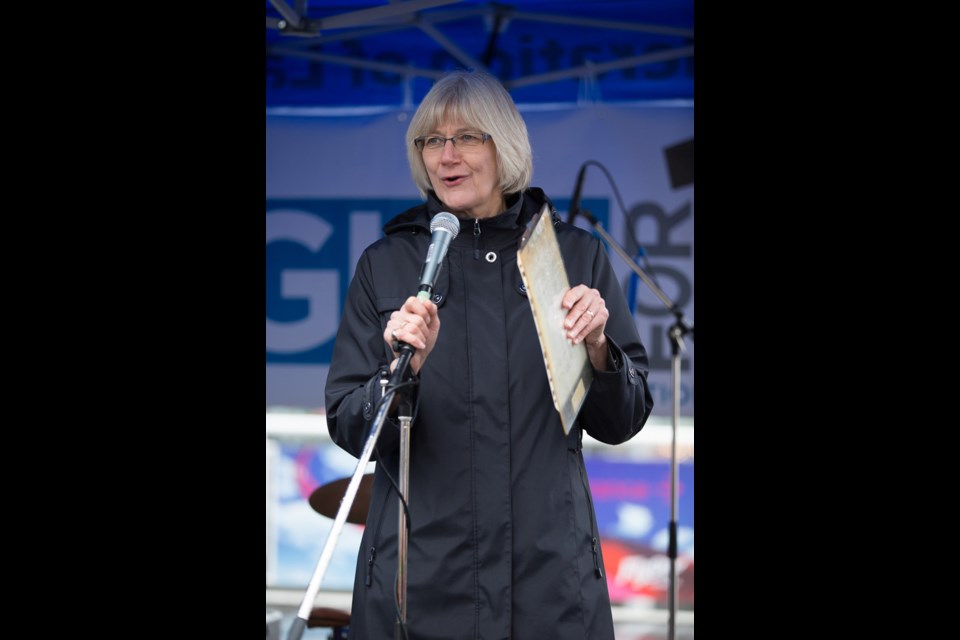When it comes to minimum wage, British Columbia is about to hit a new low, according to the B.C. Federation of Labour.
Even with the province’s 20 cent-increase, effective Sept. 15, B.C. will still lag behind the rest of the country.
“By the end of this year, B.C. will be 12th in 13 provinces and territories in terms of minimum wage. We will be at rock bottom,” said Irene Lanzinger, president of the B.C. Federation of Labour. “And I think with the cost of housing and the cost of living in British Columbia, we should be leaders in minimum wage.”
B.C. is now the third-last in the country when it comes to minimum wage, but with increases coming later this year, New Brunswick will be the only province with a lower minimum wage than B.C.
That’s something the B.C. Federation of Labour is hoping to change with “Fight for 15,” a campaign to raise the minimum wage to $15 per hour. It’s also something the majority of folks support, according to Lanzinger.
“We’ve done some polling. Almost 70 per cent of people support a $15 minimum wage,” she said. “Eighty per cent of people say if you work, you shouldn’t live in poverty. Work should lift you out of poverty.”
Many territories and provinces, including B.C., index their minimum wage to the consumer price index, so when the cost of goods and services goes up, so does the minimum wage. But this year’s 20 cent-increase in B.C. doesn’t cut it for Lanzinger.
“That will do nothing to lift people out of poverty. Workers will still be $6,000 below the poverty line at $10.45, so it’s a completely inadequate response to hundreds of thousands of workers living in poverty,” she said.
Lanzinger pointed to the federal NDP’s election platform, which is promising a $15 minimum wage. However, Thomas Mulcair and the party have been criticized for misleading the public by pitching it as a “national” minimum wage, when it would only apply to federally regulated employees, which represent a tiny fraction of the country’s workers.
“Unfortunately, that’s the only thing they control as the federal government, that’s the only thing they can do, and while it will not impact as many workers as we’d like, I think symbolically it’s good,” Lanzinger said. “Government is committed to a $15 minimum wage, federal government, so that means we need to convince provincial governments to be committed to that as well. We have won in Alberta, so we’re hoping that spreads.”
For more information on the campaign, go to fightfor15bc.ca.
Minimum Wages: How Does B.C. Measure Up?
Source: Retail Council of Canada
PROVINCES:
B.C. $10.25, going up to $10.45 on Sept. 15
Alberta, $10.20, going up to $11.20 on Oct. 1
Saskatchewan, $10.20, going up to $10.50 Oct. 1
Manitoba, $10.70, increasing to $11 in 2017
Ontario, $11, increasing to $11.25 Oct. 1
Quebec, $10.55
New Brunswick, $10.30, increasing to $11 in 2017
Nova Scotia, $10.60
Prince Edward Island, $10.50
Newfoundland and Labrador, $10.25, going up to $10.50 on Oct. 1.
TERRITORIES:
Yukon, $10.86
Northwest Territories, $12.50
Nunavut, $11

Five things you need to know about the Fight for $15 campaign
Source: B.C. Federation of Labour
- The $15 figure was chosen as a target because that’s what needed to lift people above the poverty level. For 2015, $15 per hour would put workers 10 per cent higher than the low-income cutoff, often referred to as the poverty line.
- Your typical minimum wage worker is not necessarily the stereotypical teen employed in the fast food industry. Eighty two per cent of workers earning less than $15 per hour are 20 years or older.
- 37,752 people have signed the campaign’s petition, calling for a $15 minimum wage in B.C. While the B.C. Federation of Labour is leading the campaign, supporters include the Canadian Centre for Policy Alternatives, the B.C. Teachers’ Federation, Unifor, the United Way, Grand Chief Stewart Phillip from the Union of B.C. Indian Chiefs and Vancouver Mayor Gregor Robertson.
- Women are disproportionately represented in the ranks of low-wage earners. Women represent 50.4 per cent of the population, according to Stats Can, yet they represent 60 per cent of workers earning $15 or less. Women in B.C. earn just 83 cents on the dollar compared to men.
- The current B.C. minimum wage is adjusted according to the consumer price index, but the increase of 20 cents per year won’t raise the minimum wage to $15 until the year 2034.
Fast facts from Stats Can on minimum wages
- In 2013, the minimum wage was around $10 in all provinces. In constant dollars, this rate was similar to the rate observed in the late 1970s.
- Between 1997 and 2013, the proportion of employees paid at minimum wage increased from five per cent to 6.7 per cent. The bulk of this increase occurred between 2003 and 2010.
- The profile of minimum wage workers did not change between 1997 and 2013, as young workers, less-educated workers and workers in the service sectors were still more likely to be paid the minimum wage.
- Since 1975, the average Canadian real minimum wage varied between $7 and $11 (adjusted for inflation), peaking in 1975 and 1976. Subsequently, the average minimum wage declined to under $8 in the mid-1980s and did not change much until 2005. It then began rising again, reaching approximately $10 in 2010 and stayed around this level up to 2013.



